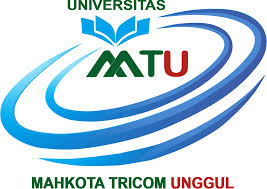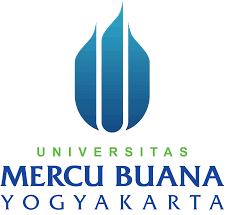Antibacterial Activity Test of Ethanol Extract and Fraction of Carrot Leaf (Daucus Carota L.) Against Staphylococcus Aureus
DOI:
https://doi.org/10.55927/mudima.v4i3.8604Keywords:
Antibacterial, Carrot Leaf, Staphylococcus AureusAbstract
Staphylococcus aureus is one of the bacteria that cause acne and can cause skin and organ damage because bacteria can defeat the body's defences. Carrot leaf extract has antibacterial power or inhibitory activity against S. aureus. This study aims to determine the inhibition value and antibacterial activity of ethanol extract and n-hexane fraction of carrot leaves. The research method consists of extraction using 96% ethanol and fractionation using water, ethyl acetate, and n-hexane. The antibacterial activity of carrot leaf extracts and fractions was carried out using the pitting method as well as the use of gentamicin positive control and DMSO negative control. The results showed that 96% ethanol extract of carrot leaves with a concentration of 30% had inhibition against S. aureus bacteria with a value of 7.8 mm or weak inhibitory activity, and the ethyl acetate fraction of carrot leaves with a concentration of 20% had inhibition against S. aureus bacteria with a value of 11.27 mm or strong inhibitory activity. Therefore, ethyl acetate fraction of carrot leaves have inhibition against S. aureus bacteria with strong inhibitory activity compared to other test solutions and is equivalent to gentamicin positive control
References
Ayeni, E. A., Abubakar, A., Ibrahim, G., Atinga, V., & Muhammad, Z. (2018). Phytochemical, Nutraceutical and Antioxidant Studies of the Aerial Parts of Daucus carota L. (Apiaceae). Journal of HerbMed Pharmacology, 7(2), 68–73. https://doi.org/10.15171/jhp.2018.12
Ahmad, T., et al. (2019). Phytochemicals in Daucus carota and Their Health Benefits—Review Article. Foods, 8(9), 1–21. https://doi.org/10.3390/FOODS8090424
Anjaswati, D., Pratimasari, D., & Nirwana, A. P. (2021). Perbandingan Rendemen Ekstrak Etanol, Fraksi n- Heksana, Etil Asetat, dan Air Daun Bit (Beta vulgaris L.) menggunakan Fraksinasi Bertingkat. Stikes, 1(1), 1–6.
Brooks, G., Carrol, K., Butel, J., Morse, S., & Meitzner, T. (2010). Jawetz, Melnick, & Adelberg‟s Medical Microbiology (25th ed.). Norwalk: McGraw Hill Companies.
Chan, E.W.C, Lim, Y. Y., & Omar, M. (2017). Antioxidant and Antibacterial Activity of Leaves of Etlingera Species (Zingiberaceae) in Peninsular Malay-sia. Food Chemistry. 104. 1586-1593.
Dewi, M. A., Ratnawati, J., & Sukmanengsih, F. (2015). Aktivitas Antimikroba Ekstrak Etanol dan Fraksi Pelepah Aren (Arenga pinnata Merr) terhadap Propionibacterium acnes dan Staphylococcus aureus. Kartika Jurnal Ilmiah Farmasi, 3(1), 43–48. https://doi.org/10.2687.
Ejidike, I. P., & Clayton, H. S. (2022). Green Synthesis of Silver Nanoparticles Mediated by Daucus carota L.: Antiradical, Antimicrobial Potentials, in Vitro Cytotoxicity Against Brain Glioblastoma Cells. Green Chemistry Letters and Reviews, 15(2), 297–310. https://doi.org/10.1080/175
Fitriyanti, F., NorHavid, M. F. R., & Ramadhan, H. (2020). Uji Daya Hambat Ekstrak Etanol 70% Biji Pepaya (Carica papaya L.) terhadap Bakteri Propionibacterium acnes Penyebab Jerawat. Pharmacoscript, 3(2), 143–149. https://doi.org/10.36423/pharmacoscript.v3i2.400
Hadyarrahman, Z., Yuliawati, K. M., dan Syafnir, L. (2017). Pengaruh Perbedaan Metode Ekstraksi Daun Wortel (Daucus carota L.) terhadap Aktivitas Antibakteri pada Staphylococcus aureus dan Escherichia coli. Prosiding Farmasi, 3(2), 634–641. file:///C:/Users/kartini/Downloads/8174-17903-1- PB.pdf
Haryati, S. D. H., Darmawati, S., & Wilson, W. (2017). Perbandingan Efek Ekstrak Buah Alpukat (Persea americana Mill) terhadap Pertumbuhan Bakteri Pseudomonas aeruginosa dengan Metode Disk dan Sumuran. Prosiding Seminar Nasional Publikasi Hasil-Hasil Penelitian Dan Pengabdian Masyarakat, Universitas Muhammadiyah Semarang, September, 348–352. https://jurnal.unimus.ac.id/index.php/psn12012010/article/view/2886
Kementerian Kesehatan RI. (2000). Parameter Standar Umum Ekstrak Tumbuhan Obat. Jakarta: Direktorat Jendral Pengawasan Obat dan Makanan.
Otto, M. (2014). Staphylococcus aureus Toxins. Current Opinion in Microbiology, 17(1), 32–37. https://doi.org/10.1016/j.mib.2013.11.004
Poeloengan, M., Komala, I., & Salmah, S. (2006). Antimicroba and Fitochemical Activities of Herbal Medicine. Seminar Nasional Teknologi Peternakan Dan Veteriner, 974–978
Retnowati, Y., Bialangi, N., & Posangi, N. W. (2011). Pertumbuhan Bakteri Staphylococcus aureus pada Media yang Diekspos dengan Infus Daun Sambiloto (Andrographis paniculata). Saintek, 6(2)
Downloads
Published
How to Cite
Issue
Section
License
Copyright (c) 2024 Nadia Ayuwanda S Akune, Ismi Rahmawati, Saifullah Sulaiman

This work is licensed under a Creative Commons Attribution 4.0 International License.



































